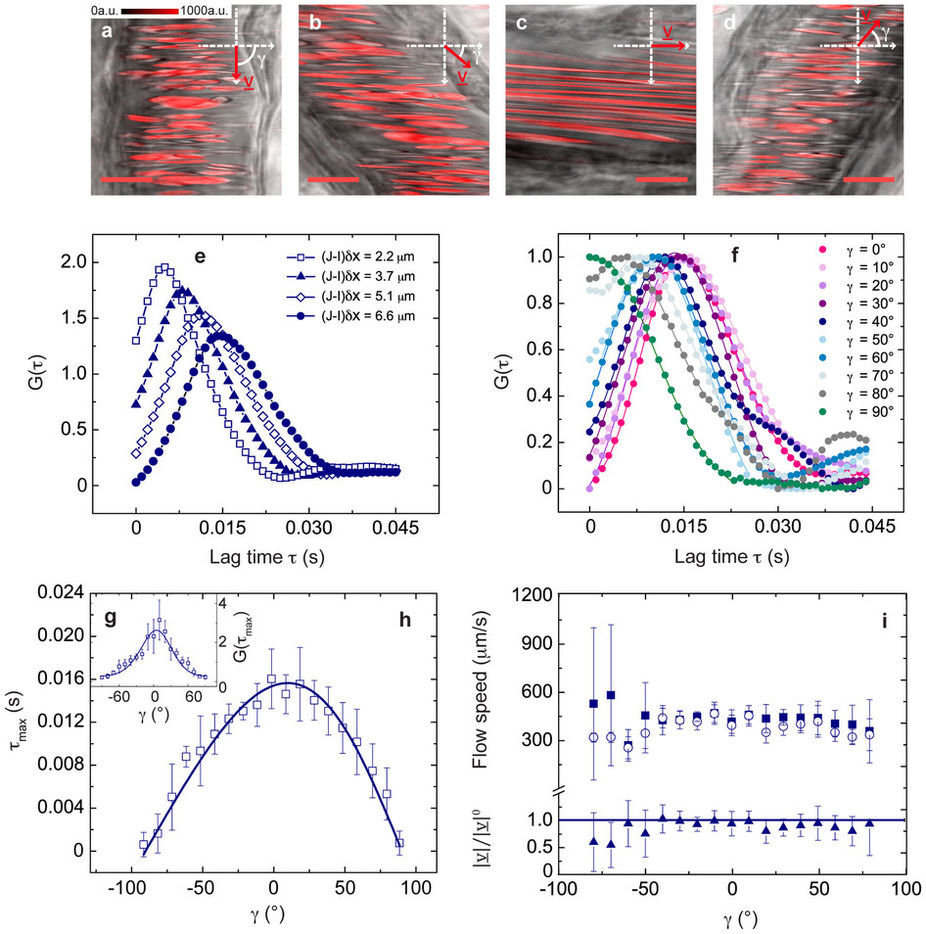Fig. 2
Validation measurements in Zebrafish embryos (3 days post fertilization d.p.f.).
(a)?(d) Confocal xy-images acquired by detecting the fluorescence signal (shown in red) of DsRed-expressing RBCs (?exc = 561?nm, detection bandwidth = 575?650?nm), overlaid to (non-confocal) transmitted-light images. fline = 1000?Hz, ?x = 0.04??m, scale bar, 10??m; ? = 90°, 50°, 0°, ?50° in (a), (b), (c) and (d), respectively. ? and v are sketched in the reference Cartesian xy-plane. (e) Exemplifying experimental CCFs for increasing column distance, showing the expected decrease of the peak time for lower (J-I)?x values. (f) Normalized CCFs for ? ? [0°, 90°] and (J-I)?x = 6.6??m, fitted to equation (3); errors are within the size of data points. (g), (h) Experimental CCF peak amplitude (in g) and peak time (in h) for ? ? [?90°, 90°] (mean ± standard deviation (s.d.), from n = 7 xy-images), fitted to equation (S.44) and equation (4) (derived in the approximation D = 0 in Supplementary Note 2). Best-fit parameters a = 6.3 ± 0.2??m in (f) and |v| = 424 ± 11??m/s in (g). (i) Flow speed |v| recovered from the CCFs fit (open circles, mean ± s.d., n = 4) and |v|0 recovered directly from the CCFs peak time (filled squares, weighted average ± s.d., n = 7). In the lower panel, |v|/|v|0 is shown for ? ? [?80°, 80°]. For ? = ± 90°, |v|0 has not been recovered since the CCF turns into a decay (see panel f).

